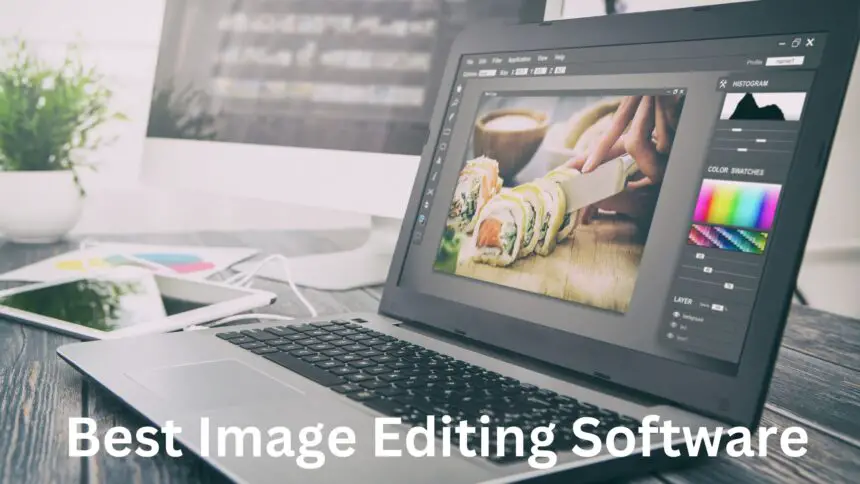In this age of visual dominance, the importance of mastering image editing cannot be overstated. Whether you are a professional photographer, graphic designer or just a hobbyist looking to enhance your personal photos, having the right tools can make all the difference between ordinary and extraordinary work. This comprehensive guide will take you through some of the best image editing software available today, discussing their features, strengths and how they can help you create stunning visual content.
A Creative Playground: The World of Image Editing
Suppose you entered into a vast playground that had no limits where only your imagination set boundaries. That’s what image editing software provides; a blank canvas for refining, transforming and perfecting your visual creations. From simple photo enhancements to intricate digital artwork, appropriate software could turn an ordinary snapshot into a masterpiece. However, selecting from numerous options may be daunting. Do not worry; we have got you covered on the top tools available today.
Adobe Photoshop is widely regarded as the gold standard in image editing software. It has been setting standards in digital imagery for years now. Even its name is used as another word for high-quality photo editing and design.
Features:
Layer-Based Editing: This feature permits you to create intricate compositions and make precise adjustments.
Retouching Tools: These include advanced features like Content-Aware Fill and Healing Brush.
Filters and Effects: There are numerous filters and effects that can be used to enhance or completely change images.
Integration: It works seamlessly with other Adobe Creative Cloud apps such as Illustrator and Lightroom.
Why You Might Choose Photoshop: If you’re serious about image editing and need a tool that can handle virtually any task, Photoshop is your go-to. Its depth and flexibility make it ideal for professionals who need to push the boundaries of creativity.
Adobe Lightroom is like the wise, organized older sibling of Photoshop. It specializes in photo management and is tailored to streamline the editing workflow for photographers.
Features:
Non-Destructive Editing: This feature allows you to make changes without affecting the original image.
Presets: They enable you to create your own filters fast.
Organizational Tools: Tag and categorize photos for efficient workflow management.
Integration: Works well with Photoshop for more advanced editing tasks
Why You Might Choose Lightroom: For photographers who need to handle large volumes of images efficiently, Lightroom’s organizational capabilities and non-destructive editing features are invaluable.
GIMP: The Free Powerhouse
Open-Source Brilliance
GIMP, which stands for GNU Image Manipulation Program, is a free and open-source alternative to Photoshop. It’s got all the features and customization options you could ask for without costing a single dollar.
Features:
Customizable Interface: You can adapt the workspace according to your preferences.
Advanced Editing Tools: From layer masks to advanced filters.
Extensive Plugin Support: There are numerous plugins that can be used to extend its functionality.
Why You Might Choose GIMP: For those who want a powerful alternative to Photoshop at no cost, GIMP is rich in features but not in money. It’s particularly good for people who like open source software.
Affinity Photo: The Contender
Affordable Excellence
Affinity Photo is a strong contender in image editing with many features that are comparable to those of Photoshop at a fraction of the price.
Features:
Real-Time Editing: Changes made can be seen immediately.
Advanced Selection Tools: Such as Selection Brush Tool.
Retouching Tools: A set of high-quality tools for very precise retouching.
Why You Might Choose Affinity Photo: If you want a professional photo editor but don’t want to pay Adobe’s subscription fee, then Affinity Photo is an affordable alternative that can be bought once and for all.
Capture One: The Color Wizard
Accuracy and Professionalism
Capture One is a professional tool known for its exceptional color grading and tethering capabilities. Many high-end photographers and studios adore it.
Features:
Color Grading: Advanced color correction and grading tools.
Tethering: Real-time image capture and adjustment during shoots.
Layered Adjustments: Apply edits to specific areas with precision.
Why You Might Choose Capture One: If your work depends on accurate colors and detailed control, Capture One has the best-in-class tools that will cater for your needs. It’s especially useful in studio environments where advanced colour grading is required.
Corel PaintShop Pro: The All-Rounder
Comprehensive yet User-Friendly
Corel PaintShop Pro is a program that is not only a complete but also an easy to use software package for both beginners and experienced editors.
Features:
Comprehensive Toolset: It has everything from photo editing to graphic design tools.
User-Friendly Interface: The interface is intuitive and easy to use.
Customizable Workspace: You can create your own layout.
Why You Might Choose PaintShop Pro: If you are looking for a versatile tool that is powerful as well as easy to use, then PaintShop Pro is what you need. Unlike some other more advanced programs, it contains some features which are not so complicated.
DxO PhotoLab: The AI Innovator
Intelligent Editing
DxO PhotoLab uses artificial intelligence to automatically enhance images, making it great for people who prefer an automated approach to photo editing.
Features:
AI-Powered Enhancements: It automatically adjusts the best results.
Advanced Noise Reduction: This noise reduction capabilities are unmatched by any other software in the market.
Smart Lighting: Intelligent exposure and lighting corrections.
Why You Might Choose DxO PhotoLab: For users who want high-quality results with minimal effort, DxO PhotoLab’s AI-powered tools make complex edits easy and fast.
Pixlr: The Online Solution
Convenient and Accessible
Pixlr is an online image editor that combines simplicity with a surprisingly wide range of features, which makes it ideal for quick touch-ups or casual users.
Features:
Web-Based Access: No installation required; just open your browser.
User-Friendly Interface: Simple tools and layout for quick editing.
Free and Paid Versions: The free version has basic features while the paid one has more advanced tools.
Why You Might Choose Pixlr: Pixlr is an online platform that is quick and easy to use, especially for simple editing if you don’t want to download software.
Choosing the Right Tool for You
Your specific needs, skill level and budget will determine the best photo editing software for you. Here is a brief overview to help you make up your mind:
For Professional-Level Editing: Adobe Photoshop or Capture One.
For Comprehensive Management and Editing: Adobe Lightroom.
For Free, Robust Editing: GIMP.
For Affordable Professional Tools: Affinity Photo.
For Versatility and Ease of Use: Corel PaintShop Pro.
For AI-Enhanced Editing: DxO PhotoLab.
For Quick, Online Edits: Pixlr.
Conclusion
Image editing software changes as quickly as the images it helps create. There’s something for everyone whether you’re a seasoned pro or just starting out on your creative journey. Knowing what each program excels at will help you choose wisely, so that you can enhance your image editing skills and bring your visual projects to life.
Welcome to a world full of opportunities where you can explore the power of these cutting-edge photo editing tools and make your ideas come to life. The right software is not just an application; it’s how you unleash your creative potential.






